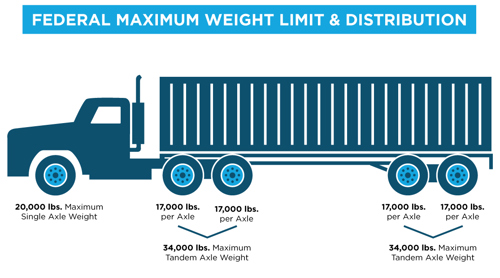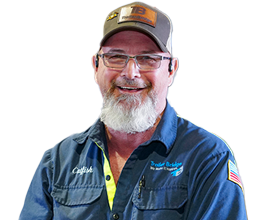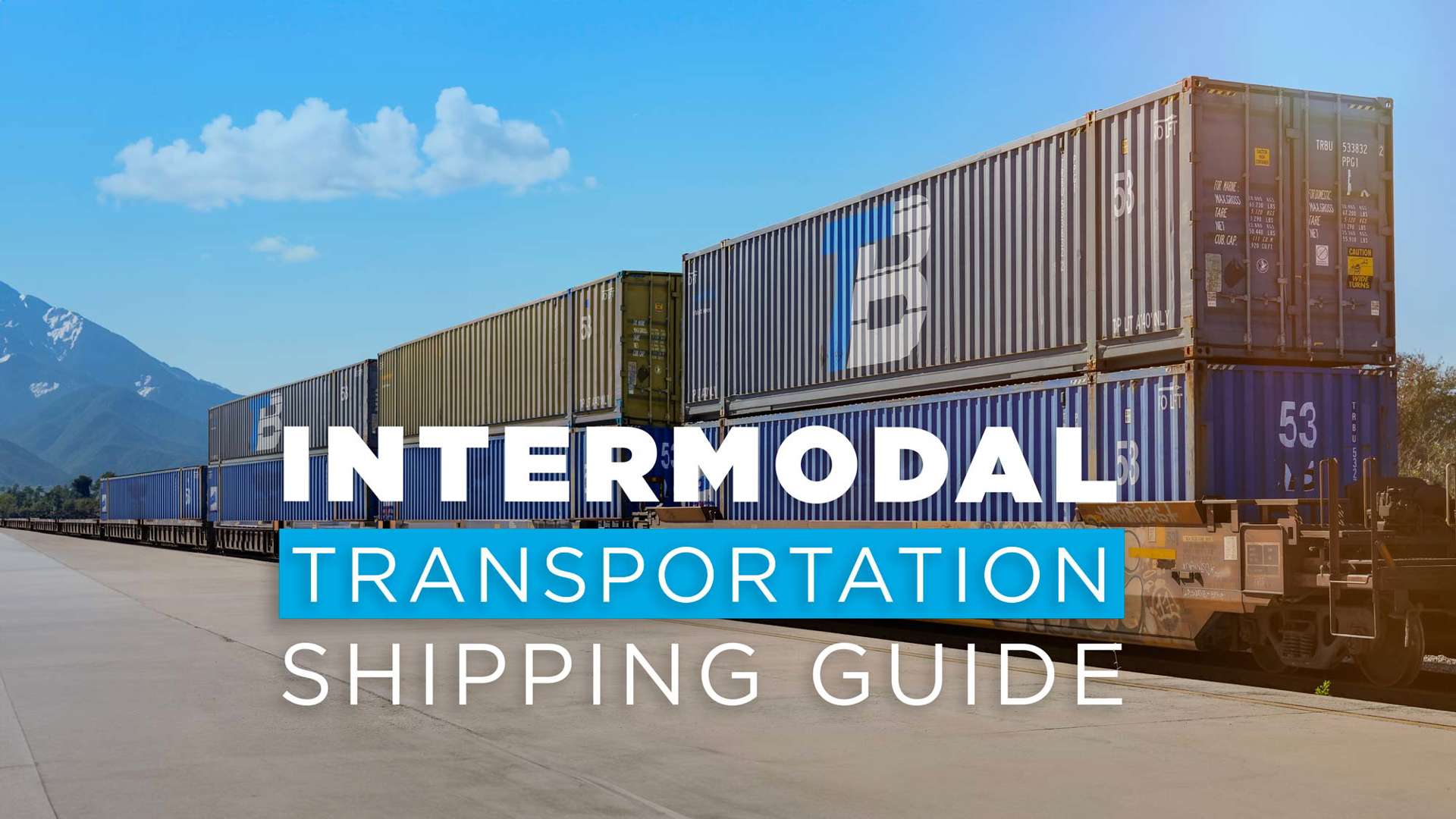
Intermodal Transportation Guide
If you’re looking to make your supply chain more efficient and cost effective, intermodal transportation could be the solution you are looking for. This versatile shipping method can benefit shippers of any size, accommodate most types of freight, and be integrated into both domestic and international supply chains.
In this blog, we equip you with the information you need to know about intermodal to determine if it’s a useful addition to your transportation toolbelt – including how it operates, tips to choose the best provider, business benefits, and more.
Section 3: What Can be Shipped with Intermodal?
No matter the type of freight you move, it can most likely be shipped using intermodal.
Section 5: How to Load Intermodal Containers
When preparing for an intermodal shipment, it’s your responsibility as the shipper to load your freight into containers so that it is safe for transit. This includes blocking and bracing the items inside the container and making sure it meets weight limit and distribution laws.
Section 7: What is an Intermodal Provider?
When shipping by intermodal, you will need to use an intermodal provider (also called an intermodal marketing company or IMC). Railroads do not work directly with individual shippers, so the IMC’s role is to coordinate the shipment and act as a liaison between the shipper and rail company. They also arrange dray services to move your cargo to and from the rail terminal.
A major benefit of intermodal providers is the convenience of having a single point of contact for your entire shipment. This is especially helpful when your freight is traveling from coast to coast in the U.S. Since there is no single rail carrier that provides direct service across the country, your freight will have to change hands between rail companies part way through. When this happens, your intermodal provider will handle the exchange between rail lines, so you don’t have to bridge the communication gap yourself.
Section 8: How to Choose an Intermodal Provider
With so many companies offering the same service, it can be difficult to know which one to trust with your business. Consider these factors to help you make your decision.
Rate
Cost is a consideration in every business transaction. Make sure you get quotes from multiple providers so you can compare what they are charging. Having multiple points of reference helps you know that you are getting a fair market rate. If there are outliers on the high or low end, it is probably best to avoid these providers.
Level of Service
When considering providers who offer similar solutions, their level of service can be the primary differentiator. Here are some ways to vet a provider’s service before working with them.
- Look at customer reviews. Pay special attention to those who mention response time, how unexpected issues were handled, and customer treatment. These are usually good indicators of the type of service you can expect to experience.
- Ask for references. Keep in mind that providers will always supply references that they know will give favorable reviews. But it is still a great opportunity to speak with previous customers and ask them questions.
- Ask intermodal providers about their communication practices with customers. Does the frequency and quality meet your expectations? Does what they’re promising echo what you’ve seen in reviews?
Relationship with Railroads
All intermodal providers work with Class I Railroads to move their freight. With only 6 Class I Railroads in the United States, that is a lot of overlap. To stand out in this saturated space, relationships matter. Ask providers about the quality of the relationships with their rail carriers. Upstanding relationships with their partners is a good sign that they will extend the same type of care and service to your business.
Service Niche
Some intermodal providers optimized their operations to fit the needs of a specific type of shipper. For example: if a provider typically works with large, high-volume shippers, then your freight might not be equally prioritized if you are a small shipper. Conversely, a provider that works with small to mid-sized shippers may not have the resources needed to serve your high-volume business.
No matter the volume of freight you ship, it is important to look for an intermodal partner that is a good match to provide the level of service and resources your business needs.
Industry Affiliations
Belonging to an industry association gives intermodal providers credibility and shows that they invest in continuous improvement through exclusive education, networking, and industry knowledge. Two notable organizations in intermodal transportation are the Intermodal Association of North America (IANA) and the Association of American Railroads (AAR).
Specialty Cargo Capabilities
If the freight you are moving requires specialized equipment or handling, you need to seek out an intermodal partner that has the resources to handle those needs. For instance, shipping perishable or liquid freight requires that they have access to refrigerated containers (reefers) or tankers.
Hazardous materials (hazmat) is another type of freight that requires special care. If you plan on shipping hazmat, make sure the provider you choose is experienced with this type of freight. Their knowledge of the legal regulations and procedures that must be followed will help avoid shipping delays and costly fines. If you would like to familiarize yourself with some of the legal requirements, The American Association of Railroads (AAR) provides this manual with guidelines for handling hazmat during intermodal operations.
Section 9: Understanding Intermodal Pricing
While the specifics may vary from shipment to shipment, the pricing formula used for intermodal transportation is simple: the final rate it the sum of all the transportation involved from shipper to receiver, plus fuel.
For example, a basic door-to-door intermodal rate includes origin drayage, rail transport, destination drayage, and fuel. Fuel pricing is based on the National Fuel Index, published by the U.S. Energy Information Administration (EIA). This tool provides the weekly average of fuel prices in different markets across the country and is used as a reference point by transportation providers.
Pricing Models
Rates for intermodal transportation can be quoted using different pricing models based on the shipper’s needs. The three most common are spot rates, contract rates, and project rates.
Spot Rates
A spot rate is a one-time quote provided for a specific shipment. In this scenario, you would request a quote from your intermodal provider who would then provide pricing based on the current market rates. While intermodal providers do take the trucking spot market into consideration since drayage is part of the process, intermodal spot rates are generally more stable than trucking spot rates from week to week.
Contract Rates
Contract rates are provided as long-term pricing for consistent freight capacity over specific lanes. Periods for contract rates can range from a few months up to a year. The shipper’s primary benefit to the shipper is predictable pricing and the ability to better budget long-term transportation costs. In turn, the intermodal provider and railroad have guaranteed business for a long period of time.
Since there are multiple steps involved in intermodal transportation, the quoting process for contract rates is different than other direct modes of transport, such as trucking.
If you are looking for a contract rate, the first step is to contact your intermodal provider. The intermodal provider will then request contract pricing from the rail line on your behalf. After the rail line returns their rate, the intermodal provider adds the estimated cost of dray services and fuel on their end. The final rate is then calculated and returned to you for review and approval.
Project Rates
Project rates are used for a series of intermodal moves that are larger than a single shipment, but don’t have the length or consistency necessary for a contract rate. A company needing to move warehouse equipment to a new location could justify a project rate, for example. A series of moves is required to get all the equipment to its destination, but once it’s delivered there won’t be any further need for service.
When quoting a project move, your intermodal provider will give you the total cost based on the scope of service needed.
Information Needed for a Quote
Providing all the necessary information up front will help your intermodal provider return your quote more quickly. It’s always beneficial to get quotes from multiple providers for comparison. Here is the basic information needed to quote an intermodal shipment:
- Origin and destination: Where the shipment will be picked up and delivered. Zip codes are usually sufficient for the quoting stage.
- Weight: Overall weight of the shipment. Don’t forget to include the weight of the packaging and any necessary blocking and bracing.
- Commodity: A general description of what you will be shipping (ex. non-perishable canned foods, retail exercise equipment, etc.)
- Volume: Overall measurements of the freight when inside the packaging (Length x Width x Height)
- Special Requirements: Any details about your freight that may need special accommodation (perishable, hazmat, temperature-sensitive, etc.)
Factors Impacting Intermodal Pricing
In addition to the basic information about your shipment, there are also external factors that may have an impact on your pricing.
Direction of Travel
In the United States, intermodal shipments traveling west to east will almost always cost more than those shipping east to west.
The west coast is a major shipping hub, with the Port of Los Angeles alone handling 20% of the country’s imports. This creates a concentrated demand from shippers needing to move their arriving freight to the rest of the country, which causes intermodal rates to go up.
On the east coast, the volume of freight being moved is much lower, resulting in less demand for intermodal capacity. With less competition for capacity, the rates for intermodal transport are lower as a result.
Peak Season Shipping
Intermodal peak season, also known as “retail season,” usually runs from the end of summer to mid-fall when retailers import their products for the holiday season. Due to the influx of freight being moved, demand for intermodal increases significantly. If you plan on shipping during this period, be prepared to pay much higher rates to secure capacity.
Accessorial Charges
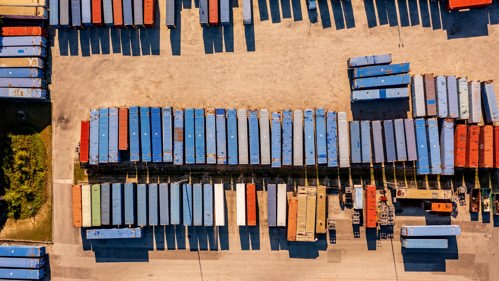
Accessorial charges are additional costs that may be incurred for your shipment, in addition to the base rate. They don’t occur with every shipment and can usually be avoided with proper planning and regular communication with your intermodal provider. But it’s important to be familiar with frequently used accessorial terms in case you do encounter them.
These are some of the most common intermodal accessorial charges:
Demurrage: Demurrage is charged when full containers are not picked up from the carrier’s location (either railroad or shipyard) within the allotted number of free days after arrival. Demurrage is usually charged daily until the equipment is picked up.
Detention: Detention is charged by drayage drivers when they must spend extra time waiting for cargo to be loaded or unloaded after the allowable amount of free time (usually 1-2 hours).
Per Diem: Carriers (either railroads or ocean) charge per diem when their equipment, such as containers or chassis, is borrowed for transport and not returned within the period allotted.
Storage: When containers arrive at the destination railyard, the sender has a short window of time to pick them up after being notified of delivery. If the container remains in the railyard past the time allowed, they will be charged for storage.
Equipment Order Not Used: This is the same concept as a Truck Order Not Used (TONU) in OTR trucking. If a pickup is scheduled for an intermodal move and then cancelled outside the acceptable window, a fee will be charged to the shipper.
Rework: All shipments have weight and loading requirements that must be met for safe transport. A rework fee is charged when a shipment needs to be altered after pickup because it doesn’t meet the necessary regulations.
Section 10: Optimizing Your Transportation Strategy with Intermodal
\Now that you have familiarized yourself with intermodal, you may be wondering about the next steps you should take to integrate it into your supply chain.
Related Articles





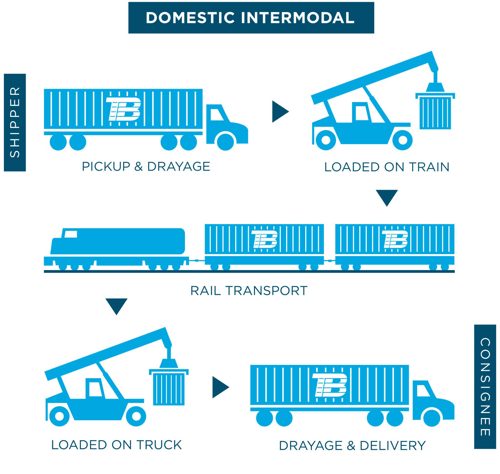
 When the shipment arrives at the intermodal terminal, it is transferred from truck to train, then spends most of its journey being transported to its destination by rail.
When the shipment arrives at the intermodal terminal, it is transferred from truck to train, then spends most of its journey being transported to its destination by rail.

